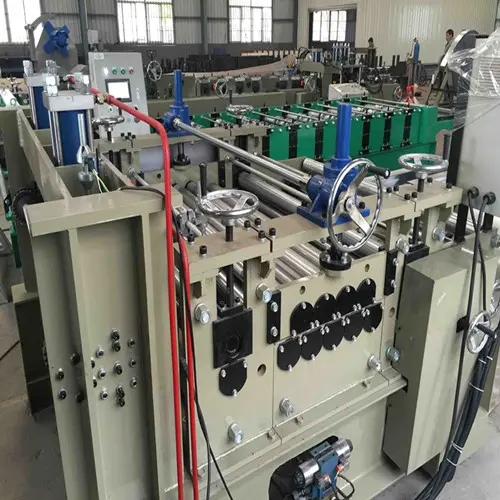
Understanding the Hydraulic Guillotine Machine
In the landscape of modern manufacturing, precision and efficiency are paramount. One of the unsung heroes of metalworking is the hydraulic guillotine machine, a powerful tool that provides unparalleled cutting capabilities for a variety of materials, primarily metal sheets. This machine's design and operation are not only efficient but also promote safety and ease of use in a fast-paced industrial environment.
The Mechanism of the Hydraulic Guillotine
At its core, the hydraulic guillotine machine operates based on hydraulic pressure to achieve precise cuts. The machine features a robust frame that holds a pair of blades, one fixed and one movable. When operated, hydraulic cylinders generate a significant amount of force that drives the movable blade downwards, slicing through the material placed on the machine's bed. The hydraulic system allows for adjustable cutting heights, enabling the user to cut various thicknesses of materials with ease.
One of the standout advantages of hydraulic guillotines is their ability to deliver clean, straight cuts. This precision is essential in industries where tolerances are tight, and any deviation can lead to costly rework. The cutting angle can usually be adjusted, providing further versatility to cater to different applications.
Safety Features
Safety is a critical concern in any manufacturing environment, and hydraulic guillotine machines are designed with several safety features to protect operators
. These machines often incorporate guards and emergency stop buttons, which help to prevent accidents during operation. Additionally, hydraulic technology mitigates the risks associated with mechanical failures, as the smooth operation reduces the likelihood of sudden jerks that can lead to injuries.
Application Across Industries
Hydraulic guillotine machines are utilized in a broad spectrum of industries, from automotive to aerospace, construction, and beyond. They are ideal for handling materials like steel, aluminum, and other metals, making them indispensable in metal fabrication shops, manufacturing plants, and businesses that require precision cutting solutions.
In the automotive industry, for instance, hydraulic guillotines are used to cut parts for vehicles, ensuring that components fit together perfectly in assembly lines. Similarly, in the construction sector, they play a crucial role in preparing materials for building structures, allowing quick and accurate production of metal frames and panels.
Maintenance and Longevity
To ensure the longevity and optimal performance of a hydraulic guillotine machine, regular maintenance is necessary. This includes checking hydraulic fluid levels, inspecting for leaks, and ensuring that blades remain sharp and properly aligned. Neglecting maintenance can lead to performance degradation and increased risk of operational hazards.
Conclusion
The hydraulic guillotine machine is a vital asset in the realm of manufacturing and metalworking. Its efficient operation, precision cutting, and built-in safety features make it an invaluable tool for various industries. As technology continues to evolve, we can expect advancements in hydraulic systems and machine design that will further enhance the capabilities and efficiency of these machines, cementing their role in shaping the future of manufacturing. In a world where precision and productivity are key, the hydraulic guillotine machine stands out as a symbol of technological prowess.